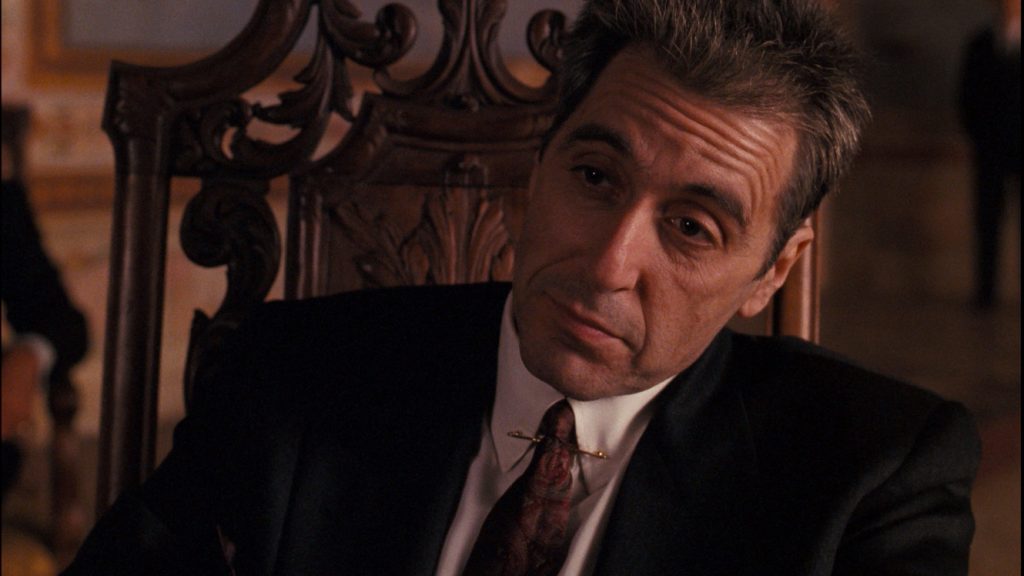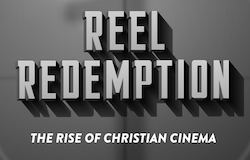Trilogy Anatomy: The Godfather III, by Tober Corrigan
10 Jun
Upon being asked after the release of the Dark Knight if he had a third installment planned, Christopher Nolan replied with asking ironically how many good third movies there were. Of course, Nolan eventually did complete his trilogy, whether it being against his better judgment or not depending on who one talks to. Throughout movie history, the essential functions of the third film in a series have either been as a fitting and satisfactory end to a particular storyline (Lord of the Rings: Return of the King), a disappointing but nevertheless conclusive entry (Godfather III), or a debacle so big as to necessitate a reset to the franchise (Superman III/Spiderman 3, etc., etc.). In anticipation of another highly-anticipated third film, War for the Planet of the Apes, this weekly series will cover famous third films, infamous third films and otherwise, exploring how trilogy-enders or other types of third films have functioned in relation to its series.
The recent Tribeca-sponsored Godfather reunion of Francis Ford Coppola and remaining cast immediately followed screenings of Part 1 and Part 2. There was no trilogy to speak of. It’s rather culturally understood at this point to disregard the 1990 sequel to one of the most acclaimed series in film history, and yet it’s still surreal to see how quick those who made it are to dismiss it too.
Admiration for the film today can be found in theory though not necessarily in practice. Both the shock and the horror of Godfather III is in its brazen disregard for what came before. Perhaps this is a function of its infamous preproduction (Robert Duvall backing out, the role of Mary Corleone going to Sofia Coppola last minute), or it could be that we were seeing the start of late-period Coppola without even realizing it. Whatever the reason, one must be daring enough to watch the film more as experiment than canon entry for it to have any power. Only then can Godfather III live or die on its own terms. It still mostly dies, but the better question is perhaps if any film within the context of its trilogy should be intending to work on its own terms.
The time gap between the first and second film prove necessary considering the real time gap that took place between their making. The filmmaking and acting feel rusty and out of sorts as a consequence. Sure, there are structural motifs returned to for attempted continuity and parallelism. The third film, like the first two, opens with the same famous trumpet motif. The first set piece is, like the first two, around a celebration. There is the expected back and forth between America and Italy. And the ending, like the first two, consists of a massively-orchestrated hit. But it is the execution of these elements that seem both out of practice and out of place. The compositions often feel unsure, shots seeming shoehorned in, as if the camera crew had not been privy to the film locations prior to shooting. I was astounded to find Gordon Willis’s name in the credits, not only because the film traded in the trademark New Hollywood grit for a slick, commercialized look sadly prophetic of the coming decade, but because the choice to do so never felt reinforced by its narrative.
Al Pacino, the marvel and bedrock of the Godfather series, feels very much out of touch too, playing the cool dad version of Michael so un-ironically as to be unnerving. Yes, 15 or more years would most likely chafe the vengeful vigor from any normal man, but the power of the Godfather mythos is that Michael becomes too singular in his vengeance, too unyielding in his ruthless decisions to ever turn back. But to see an older Michael eager to reunite with Kay (played quite well by Diane Keaton, one of the only returning performers who actually felt like she came to work) and to see him passively bumbling from one scenario to the next may not read false for those believers of the maxim that time heals all wounds, but it sure does for those who never wish to forget the Michael who watched his brother Fredo be shot, who closed the door on Kay and the idealism of his youth for what we believed to be the last time.
Roger Ebert remarked in a review upon its release that if Godfather III worked at all it was in its ability to transport the viewer back into the world of the Corleone family. I could not disagree more. While the first two films still feel both immediate and timeless while watching, this third movie, despite being 20 years younger, has aged twice as quickly. This is in key part to the cast of new actors brought into the Godfather’s inner circle. I won’t add much to the lampooning of Sofia Coppola’s performance as Michael’s daughter, but I will say that after removing myself from the critical noise, it is truly remarkable how little she was used in comparison to how large of an influence she is meant to have on the story’s emotional arc. The film works disproportionally in this way throughout, plenty of good narrative intention foiled by bad execution. In a movie aesthetically committed to awkward and disjointed acting, Andy Garcia as the surprise Corleone cousin proves the most so. His slick hair, cheesy grin, and phony leather jacket entrance all are confounding both to the film he is trying to be in and to the legacy of the films before it. He looks and acts too of his time; he comports himself throughout, both in mannerisms and in line readings, as if on a one-off episode of Law & Order. Other small roles are peppered with faces later only found in cable procedurals and half-hour sitcoms. While gutsy casting choices paid off the first time around, Godfather III proves its originator to be more the exception than the rule.
Most offensive is the decision to so quickly relieve us the dramatic weight left in the second film. Francis Coppola has been rather vocal in defending his decision to make Godfather III on the basis that he wished to see all the sins Michael committed in the second film to be visited back upon him. An intriguing idea, particularly for the religiously inclined. Yet this driving force of a narrative motivation gets lost in endless political machinations and dulled by an unnecessary three hour running time that felt as much homage to the first two films than anything else. Redemption is meant to be found in the coming together again of Michael and Kay, but it is too casually played, the two mawkishly chatting it up around Italy as if they were a test couple for a future installment of Richard Linklater’s Before trilogy. The attempts at reconciliation and hope are too forced, too obvious. Those fearing this prickly sweet sentiment to carry to the credits are in for a sick surprise at the end, with the final turn of events leading to Michael’s self-imposed exile; in the last shot we last see him collapse on the ground as his father did, though without a single human being, grandson or otherwise, to tend to him. Yes, there is poetry to be found in the film’s final montage after tragic irony gives us the big “ta-da!” And I found it moving, not because the film leading up it earned the moment, but because the linkage to the first two films finally felt organic and inevitable, the way the best third films should. If only the first 165 minutes could have taken us there first.





No comments yet